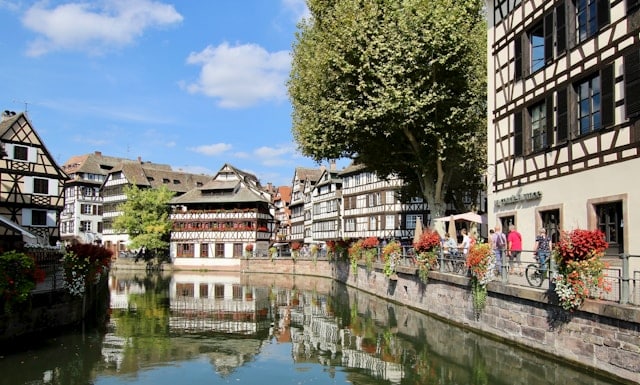How can real estate projects be optimized for pedestrian friendliness and walkability?

Introduction
The urban environment is transforming, and so are the demands of the modern city dwellers. A crucial aspect of this transformation is the focus on pedestrian friendliness and walkability in our urban spaces. More and more, people are yearning for an environment where they can easily walk to facilities, experience street life, and enjoy the public ambience. In this context, real estate projects bear a significant responsibility to shape the urban environment conducive to pedestrian travel.
We’ll delve into how real estate projects can optimize for pedestrian friendliness and walkability, guided by scholarly insights, data, and studies relating to urban planning and walkability. By giving a thought to pedestrians, real estate developers can play a critical role in creating vibrant, healthy, and sustainable cities.
Dans le meme genre : What are the key success factors for international real estate development projects?
Shaping the Urban Environment: Pedestrian Friendliness and Walkability
Pedestrian friendliness implies an environment that is safe, comfortable, and attractive for people to walk. Walkability, on the other hand, relates to the degree to which an area within a city encourages residents to travel by foot. Both these concepts are interlinked and crucial to urban planning, and hence, to real estate projects.
A study published on Google Scholar titled "The Impact of Urban Design on Walkability in Streets" highlights how certain design features can enhance pedestrian friendliness. Things like wide sidewalks, continuous pedestrian paths, traffic calming measures, pedestrian crossings, and street furniture can significantly improve the walking experience.
Sujet a lire : How to leverage advanced sensor technologies for real-time monitoring and management of real estate properties?
Real Estate Projects and City Streets: Incorporating Walkability
City streets form a significant part of the urban environment. Hence, they need to be designed with an emphasis on pedestrian friendliness. Real estate developers can contribute to this by ensuring the spaces around their projects are designed with pedestrians in mind.
A study conducted in China, as published on Crossref, found that street characteristics such as width, street connectivity, and presence of facilities such as shops and cafes influence walkability significantly. Therefore, real estate projects should consider these aspects when planning and developing their projects.
Public Facilities and Amenities: Enhancing Walkability
Proximity to public facilities and amenities, such as parks, schools, shops, and public transport stations, can significantly enhance walkability. Residents are more likely to walk if these facilities are within a comfortable walking distance.
A study on Google Scholar titled "Influence of Built Environment on Walking" found that people are more likely to walk in neighborhoods with a high density of facilities. This factor should be of paramount importance to real estate developers when selecting project locations and planning the site layout.
Pedestrian Friendliness: A Key to Sustainable Urban Environment
Pedestrian friendliness not only improves the quality of life for city dwellers but also contributes to a sustainable urban environment. Walking as a mode of travel reduces carbon emissions, alleviates traffic congestion, and promotes healthy living.
A study on Crossref titled "Walkability: Strategies for Sustainable Cities" found that cities with high walkability levels have lower carbon emissions and healthier residents. This provides compelling evidence for real estate developers to consider pedestrian friendliness as a key aspect in their projects.
Walkability in Practice: Case Study of a Pedestrian-Friendly Real Estate Project in China
As an illustrative example, let’s look at a real estate project in China that has successfully incorporated pedestrian friendliness and walkability. The project, located in an urban area, incorporated wide sidewalks, continuous pedestrian paths, ample street furniture, and a high density of facilities within walking distance, resulting in a high walkability score.
By incorporating these features, the project not only attracted more residents but also contributed to a healthier, more vibrant, and sustainable urban environment. This case study underscores how real estate projects can effectively optimize for pedestrian friendliness and walkability, significantly adding to their value and appeal.
In conclusion, it’s clear that real estate projects play a critical role in shaping the urban environment. By ensuring pedestrian friendliness and walkability, they can contribute to a healthier, more sustainable, and vibrant urban life.
Pedestrian Space: The Vital Element of Walkability
One of the vital elements that make a city walkable is the availability of adequate and safe pedestrian space. The pedestrian space refers to the area dedicated to walking, such as sidewalks, pedestrian pathways, and crosswalks. The design of these spaces absolutely affects the pedestrian friendliness of the city, and implicitly, of any real estate project.
A study on Google Scholar titled "The Role of Pedestrian Space in Urban Walkability" reveals that pedestrian space is a significant determinant of walking as a travel mode. The study recommends that pedestrian space should not only be available but also be of good quality, well-maintained, and safe from motor vehicles. This means having wide enough sidewalks to allow for easy pedestrian flow, well-defined crosswalks for safe street walking, and enough buffer between the pedestrian pathway and vehicular traffic.
Real estate projects, therefore, must ensure that they allocate sufficient pedestrian space in their design plans. This includes not just within the project but also in the surrounding street layout. Having a well-designed pedestrian environment can significantly increase the walk score of the area, making it attractive to residents who prefer walking as a mode of transportation.
Complete Streets: A Holistic Approach to Walkability
The concept of complete streets is gaining traction in urban planning and real estate development due to its holistic approach to walkability. Complete streets are roads designed and operated to enable safe, attractive, and comfortable access and travel for all users. They accommodate not just motor vehicles but also pedestrians, bicyclists, and public transportation users.
A study on Crossref called "Complete Streets: A Pathway to Urban Sustainability" highlights that complete streets can enhance the built environment’s quality and promote physical activity among residents. This is because the safe and attractive environment encourages people to walk, cycle, or use public transportation, reducing reliance on motor vehicles.
Real estate developers can incorporate the principles of complete streets in their projects. This means designing the street layout around the project to include wide and well-maintained sidewalks, protected bicycle lanes, and efficient public transportation stops, all interconnected with a well-planned road network. By doing so, developers can improve the walkability of residential areas, contributing positively to the pedestrian friendly environment.
Conclusion
Pedestrian friendliness and walkability are fundamental elements in creating more vibrant, healthy, and sustainable urban environments. Real estate projects play a significant role in shaping such environments. By focusing on aspects like the design of pedestrian space and incorporating principles of complete streets, these projects can significantly enhance the walkability of our cities.
It is essential to remember that the built environment affects the lifestyle and behavior of its inhabitants. A walkable city encourages physical activity, reduces carbon emissions, and provides a higher quality of life. As we continue to transform our urban environment, one thing is certain: real estate projects that consider pedestrian friendliness and walkability will be at the forefront of redefining our cities.
